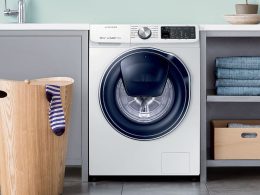There are numerous definitions for glasses. Glasses are amorphous materials formed from a melt by cooling to rigidity.
They can also be defined as optical instruments with one or more lenses.
Glasses are devices used to correct defects or protect the eyes, typically consisting of lenses and frames to hold the lenses in place.
Glasses are hard substances that may be translucent or transparent and brittle.
There are different types of glasses based on their classification, as we shall explore in this article.
Different Types of Glasses
1. Soda-lime Glasses
Being the largest quantities of all mass-produced glass types, this type of glass contains soda and lime in addition to sand.
These glasses are lightly permeable and have smooth, fine-pored surfaces making them easy to clean.
They expand quickly under the influence of heat, so care should be taken when pouring hot substances into them.
They are used to make food jars, simple drinking glasses, and sheet glass products.
2. Crystal Glasses
Having a higher density compared to soda-lime glasses. These glasses look beautiful when cut due to a high refractive index.
The glasses contain 54-65% sand, 13-15% alkali oxide, and other oxides. They are used to make drinking glasses, vases, bowls, and decorative ornaments.
3. Borosilicate Glasses
Have 70-80% sand as its major constituent, 7-13% boron trioxide, 4-8% sodium and potassium oxide, and 2-7% aluminum oxide.
Borosilicate glasses are one of the different types of glasses with compositions that are highly resistant to chemicals, so they are mainly used for chemical production,
They are also used as bottles containing pharmaceuticals, to package injectables, or as extremely durable lamp covers.
They are also used in the household for baking and other heatproof kitchenware.
4. Special Glasses
They are glasses used for special technical and scientific applications. Examples include lenses, glass ceramics, and glass products used by the electrical and electronics industries.
5. Flat Glasses
Known to be the first product from the float process of making glass, this type of glass is the base material of many common products, including windscreens, home windows, bus stops, and much more.
These glasses have uniform thicknesses, and they make the bases for more advanced different types of glasses through further processing.
6. Curved Glasses
These glasses are obtained after heating the pre-float glasses to the softening temperature and relying on glass weight to make the glass into non-planar shapes that match the mold in various specific molds.
Curved glasses can be sub-classified based on the production methods into hot bending and tempered curved glasses.
7. Stained Glasses
Glasses can be manufactured in different colors by adding different metals into the initial mix.
When glasses of different colors are pieced together to make larger units, the end products are referred to as stained glasses.
These different types of glasses can replicate specific images or offer more abstract designs.
They can be used as windows in places of worship and can also be found in other structures such as restaurants.
8. Toughened Glasses
The cooling process in this type of glass creates counteracting stresses meaning that if they break, they will shatter into small, square fragments rather than shards, decreasing the risk of injury.
Their milky-white appearances make them popular techniques for shower doors or front doors where privacy is required.
They can also be used for fire-resistant doors and mobile screen protectors.
9. Patterned Glasses
There are produced when heated glasses are passed through rollers containing regular patterns to be imprinted upon the glass.
They are often used for bathroom windows or doors where light may be required but not total transparency.
10. Laminated Glasses
Known to be invented by mistake when a French chemist named Edouard Benedictus knocked over a lab flask only to notice it did not shatter.
This type of glass is held by an interlayer, meaning it won’t shatter on impact, making it a good choice for front doors, store window fronts, and car windscreens where increased security is needed.
11. Mirrored Glasses
These glasses are made by applying a metal coating to one side of the glass, typically made of aluminum, chrome, gold, or silver.
These glasses can be produced in any size, from small bathroom mirrors to full-length wardrobe doors.
12. Coated Glasses
Known to boost thermal efficiency and reduce electricity bills when used as home insulators, these modified flat glasses are commonly used as double-glazed windows to improve home insulation.
13. Sandblasted Glasses
Offering the perfect balance between beauty and privacy, these different types of glasses create unique mist effects when produced.
These glasses work when scattering light passes through them, blurring the appearance of the image on the other side.
14. Shatterproof Glasses
With the addition of plastic polyvinyl butyral in its making process, these glasses cannot form sharp-edged pieces when broken. They are used for windows, skylights, floors, and so on.
15. Extra Clean Glasses
Acting as stain proofs and giving beautiful appearances due to their photocatalytic and hydrophilic properties, these glasses have very low iron contents making them extra clear.
16. Chromatic glasses
They are used in ICUs and meeting rooms, amongst others, since they can control the transparent efficiency of the glass and protect the interior from daylight.
The glasses may be photochromatic, thermochromatic, or electrochromic.
17. Glass blocks
Manufactured from two different halves, which are pressed and annealed together during the melting process of glasses, these different types of glasses provide an aesthetic appearance when light passes through them, and they are used for architectural purposes, construction of walls, skylights, and so on.
18. Insulated Glazed units
These glasses contain glasses that are separated into two or three layers by air or vacuum. They act as good insulators, which help prevent heat loss through glass doors and windows.
Conclusion
Glasses offer a wide array of uses, and they can be classified based on different criteria, from their chemical composition to their shape to their utilitarian uses, the list goes on.
There are different types of glasses, each type serving its specific purpose. Knowing how the glasses we see are produced and the functions they serve is an added knowledge to our previous ones.








